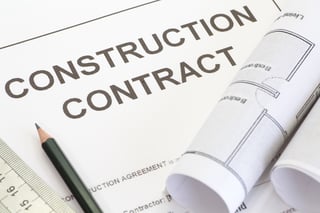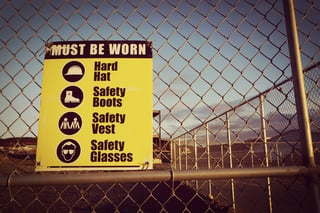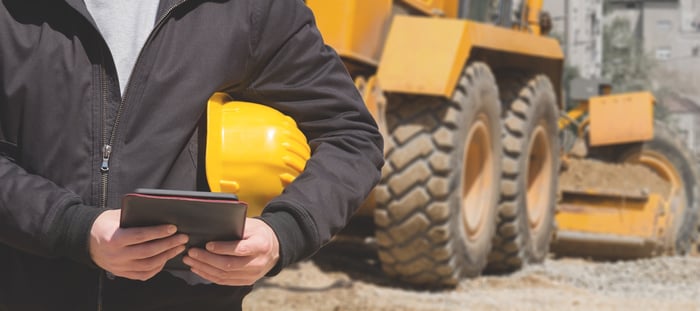
Contractor & Sub-Contractor and Additional Insured Certificates
Best Practices for Business Owners and Adjusters for protection and appropriate handling of construction claims.
When a construction firm is hired for a project, it is common sense for most organizations to require proof-of-insurance from the general contractor. It is then up to the general contractor to be certain that their sub-contractors are appropriately insured.
To ensure your organization has the proper protection in place, the construction firm needs to have the appropriate coverage in place not only for their employees but for any sub-contractors the general contractor may hire during the project.
This, along with the contract containing indemnification language, is important for your adjuster to tender the claim to the appropriate party.
If you’re the business owner, here are some tips on what to be alert for when you hire a contractor.
Contract
 In addition to verifying that the appropriate coverages are included in your contract with the general contractor, be alert to what agreement is in place with any sub-contractors. Many times general contractors are not getting a written contract/agreement with sub-contractors or confirming they are adequately insured.
In addition to verifying that the appropriate coverages are included in your contract with the general contractor, be alert to what agreement is in place with any sub-contractors. Many times general contractors are not getting a written contract/agreement with sub-contractors or confirming they are adequately insured.
Sub-Contractors
On a construction site or job, there can be many contractors working at the same time. The general contractor will retain the sub-contractors for their respective areas of expertise. Some sub-contracts come and go, others are present the entire duration of the project.
It is common for the general contractor to have each and every sub-contractor sign a contract and provide their own proof-of-insurance with specified minimum limits, per the contract.
We recommend that business owners:
-
Obtain copies of all contracts, sub-contracts, additional insured certificates,.
-
It is standard practice for the contract to require that the sub-contractor adds the general contractor as an additional insured on their Thus an additional insured certificate is produced. On that certificate, the appropriate limits of coverage are listed by line of coverage and who that carrier is for that particular line of coverage.
The certificate will also list the agent or broker. It contains the carrier plus the policy number and effective dates. Notes can be added to the bottom of the certificate as well.
-
In the contract agreement, traditionally the subcontractor agrees to hold the general contractor, owner, architect and all relevant parties, harmless and indemnify them and provide them with a defense.
By taking these steps when hiring a general contractor, you can shorten the complexity and duration of a claim if one should occur as well as be properly protected with the appropriate limits of liability coverage to protect all parties.
What to do When an Accident Happens
Unfortunately, accidents do happen on construction sites and when they do, it is important for a claims adjuster to be assigned that has the experience to take the necessary steps quickly.
Scene Investigation
It is critical to do an immediate scene investigation as for obvious reasons; construction sites change rapidly. Getting scene photos right after any accident is essential and can become crucial evidence.
Safety Investigation
Many times OSHA or other authorities may be called and will investigate for safety violations. It is important for the adjuster to obtain a copy of this report.
Safety Equipment
 It is important to confirm if safety equipment and devices were supplied to the parties involved and if they utilized the devices. As mentioned above, a prompt and thorough scene investigation can help confirm if safety devices were used or not by taking scene photographs.
It is important to confirm if safety equipment and devices were supplied to the parties involved and if they utilized the devices. As mentioned above, a prompt and thorough scene investigation can help confirm if safety devices were used or not by taking scene photographs.
Identify the Parties Involved
Ideally, your adjuster would like to identify each sub-contractor working at the time of the accident and what the scope of each contractor was at the time.
Who was responsible for what? This will help narrow down the liability prospects.
Confirm who was the safety supervisor on the job.
-
Was he present?
-
How often was he there?
-
How often were safety meetings held?
-
Is there a log kept?
Cover “duty to warn.” The utmost caution must be taken at a construction site as it is naturally dangerous.
-
Was the person involved supposed to be there?
-
Was any potentially hazardous situation properly marked and identified to warn?
-
Did the injured party get drug and alcohol tested?
Most companies require drug tests immediately after any accident.
Conclusion
Take the time to ensure your organization has the appropriate protection in place with your general contractor as well as any sub-contractors before starting a construction project.
When accidents do occur on construction sites, it is important to quickly assign a claims adjuster that has the experience to take the necessary steps.
By following these best practices, you can shorten the complexity and duration of a construction claim if one should occur and be adequately protected.


